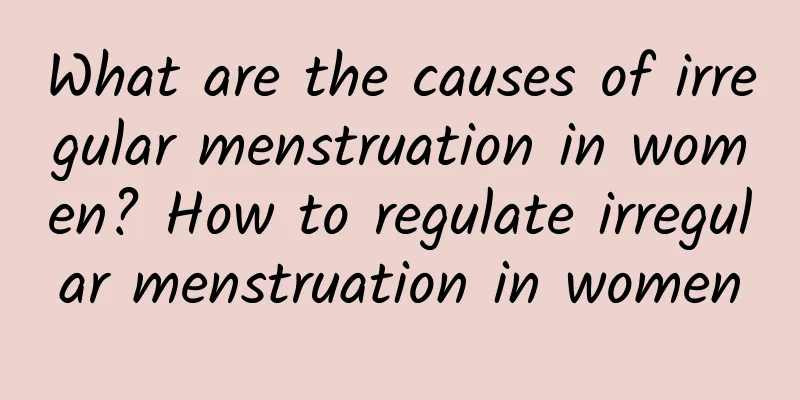Do I need to do cervical screening after menopause at the age of 55?

|
Cervical cancer screening is also necessary after menopause. Cervical cancer screening is best done at the age of 65. Women's cervical cancer screening usually requires a combined double screening, which is the HPV and TCT examination. The full name of HPV is human papillomavirus. TCT mainly uses a brush to take the exfoliated cells from the cervical opening for cancer screening. Women still need to have annual physical examinations after menopause, such as biochemistry, blood routine, coagulation routine immunity, etc. After menopause, women may experience physical discomfort due to the decrease in estrogen levels in the body. In this case, they can sometimes go to the hospital for treatment. It is recommended that as long as you are under 65 years old, you need to have an examination every year. Cervical cancer may also occur after menopause. What vaccines are available to prevent cervical cancer? Normally, HPV vaccines cannot treat cervical cancer. The treatment and prevention of cervical cancer are two completely different concepts. The specific analysis is as follows: Prevention of cervical cancer Because human papillomavirus is the main cause of cervical cancer in women, vaccination can be used to immunize against human papillomavirus infection to eliminate the cause of cervical cancer, thereby preventing the occurrence of cervical cancer. HPV vaccines are mainly used to prevent precancerous lesions of cervical cancer and anal cancer and genital warts caused by HPV infection. If these diseases have been fully formed, vaccination cannot eliminate them. The HPV vaccines that have been on the market do not have a therapeutic effect for the time being and can only be used for prevention. There are three types of vaccines to prevent cervical cancer: 2-valent vaccine, 4-valent vaccine and 9-valent vaccine. Will severe cervical erosion turn into cervical cancer? Most cervical erosions are not necessarily a real disease, but because the effect of estrogen is too strong, which causes the cervical columnar epithelium to shift outward, causing changes in the appearance of the cervix. Cervical erosion is mostly physiological cervical epithelial ectopia, that is, the columnar epithelium in the endocervical canal moves out of the external cervical opening. Affected by high concentrations of estrogen, when the estrogen level drops, the columnar epithelium will be replaced by the epithelium of the endocervical canal opening. Severe cervical erosion is called precancerous lesions if a cytological examination finds severe atypical hyperplasia, or further biopsy confirms severe atypical hyperplasia of the cervix. |
>>: What is the normal age for women to enter menopause? It is about 45 to 55 years old
Recommend
Which hospitals treat congenital absence of vagina?
What are the hospitals that treat congenital abse...
Women can prevent pelvic inflammatory disease by practicing abdominal exercises regularly
To prevent pelvic inflammatory disease, women can...
What are the causes of irregular menstruation? Can obesity also cause irregular menstruation?
The incidence of irregular menstruation is very h...
What are the dangers of vulvar leukoplakia
What are the hazards of vulvar leukoplakia? Since...
Is it normal to delay your period by 7 to 10 days every month?
It is normal for menstruation to be delayed by 7 ...
Hormones and cryotherapy are also treatments for vulvar leukoplakia
Normal07.8磅02falsefalsefalseMicrosoftInternetExplo...
How to reduce the harm of artificial abortion surgery? Do these 3 things
In order to reduce the harm of artificial abortio...
What to do about premature ovarian failure
What to do if you have premature ovarian failure?...
Why is pelvic peritonitis prone to recurrence?
Many women know that if they suffer from pelvic p...
Things female friends should pay attention to after suffering from adnexitis.
It seems to be a very common thing for women to s...
Preventing Sarcopenia for the Elderly - Three Good Ways and One Tip: Eat Healthy, Supplement Calcium and Protein
If the elderly want to live a happy life, they mu...
"Warming the kidney and regulating the spleen, resolving phlegm and removing dampness" to treat amenorrhea
Ye Zi, 28 years old, has been suffering from amen...
Pelvic inflammatory disease usually causes pain in the lower abdomen.
People with pelvic inflammatory disease usually h...
What is irregular menstruation? 10 common treatments for irregular menstruation
How to treat irregular menstruation is a common g...
Four types of causes of vulvar leukoplakia that cannot be ignored
Vulvar leukoplakia is a cruel disease for women. ...









